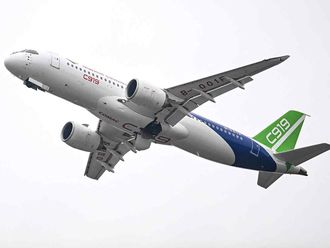
Washington: Nearly 18 years ago, one of North Korea’s most senior military officers stepped into the Oval Office and handed President Bill Clinton a letter from the isolated nation’s leader, inviting him to Pyongyang.
“If you come to Pyongyang,” Marshal Jo Myong-rok told Clinton as they sat in chairs by the fireplace, “Kim Jong-il will guarantee that he will satisfy all your security concerns.”
It was a remarkable moment — a North Korean emissary in full uniform sitting at the White House for the first time since the armistice that suspended the Korean War in 1953.
Clinton was cautious, given the enormous complexity of verifying that North Korea would eliminate weapons to strike the United States. The president thanked his visitor — and sent his secretary of state, Madeleine K. Albright, who concluded that the North Koreans were not ready to offer a full, verifiable dismantlement of their missile programme. So Clinton pulled the plug.
If President Donald Trump meets Kim Jong-un, the son of the dictator who made the offer to Clinton, the challenge of verifying that North Korea is on the way to disarmament will be far, far greater than it was nearly two decades ago. In the years since, the North has tested six nuclear weapons and, according to US intelligence agencies, has 20 to 60 more.
Its missile programme is now vast, including intercontinental missiles that may be able to hit the US and mobile missiles that can be hidden in tunnels around North Korea before being pulled out and launched quickly.
“Diplomacy is a good step, but verification is key,” said Wendy Sherman, who was in the Oval Office during that visit Oct. 11, 2000, and travelled with Albright on that ultimately unsatisfying trip.
There would need to be “site inspections everywhere necessary, as we negotiated for Iran,” Sherman said, a small dig at Trump, who has complained that the 2015 nuclear deal with Tehran left too much room for cheating. “Kim is in the driver seat — he has many nuclear weapons and he knows where all of them are. We don’t.”
As with much diplomacy in the Trump era, this one is happening without a full playbook.
The usual approach would be to negotiate the details first — defining the scope of any agreement, including fundamental questions like whether it would be limited to the nuclear and missile programMEs or would include the North’s conventional and cyberweapons.
Under standard diplomatic tactics, a presidential summit would be held out for the end of negotiations — as the lure for the North Koreans to complete the deal.
In this case, the summit would come first. It would not be a negotiation, Secretary of State Rex W. Tillerson said from Africa, but a “meeting.” It was a sign of how the process has been turned upside down that Tillerson — not for the first time — was out of the loop on the North Korean offer and appears to have heard about the president’s decision after it happened.
Tillerson’s own advisers have expressed scepticism that this effort will go very far. They recall previous commitments to “denuclearisation” that have been abandoned. That is the big risk behind this meeting — if it fails, two leaders who are acutely attuned to never backing down could find themselves back on the path to confrontation.
But Trump is supremely confident that he can hammer out the broad strokes in a one-on-one encounter, which he suggested during the campaign might take place over a hamburger. And Kim seems convinced that he has the upper hand.
The past year of missile and nuclear tests have put Kim, by the estimates of Mike Pompeo, the CIA director, “within months” of proving he could hit any US city with a nuclear weapon. That gives the North Korean leader a Plan B that his father and his grandfather never enjoyed.
The risks are many.
No inspections have taken place for years. While the CIA and other intelligence agencies have lists of “suspect” sites, the nuclear and missile infrastructure appears to have grown dramatically. The last time International Atomic Energy Agency inspection teams were allowed inside North Korea, nearly a decade ago, they could not travel outside the heavily protected Yongbyon nuclear site.
Without freedom to roam the country, looking for evidence of a second uranium enrichment facility that the CIA believes exists but cannot prove, or for hidden mobile missile launchers, any agreement runs the risk of falling apart — as previous ones have.
“Not only would North Korea have to make a complete declaration of exiting stocks — we would also need a mechanism to access suspected sites,” said Gary Samore, who also joined the meeting in 2000 with Jo and returned to the White House as President Barack Obama’s top nuclear adviser.
That, Samore notes, is “something North Korea has never agreed to.”
Kim’s opening offer is to suspend missile and nuclear testing while talks are underway. That would keep things from getting worse and is fairly easy to verify if a North Korean missile is launched or an underground test conducted.
But a freeze, as Tillerson noted in Seoul a year ago, would merely enshrine a status quo that Trump has viewed as intolerable. And it is far harder to verify the production of new nuclear material; the design and construction of weapons; continued research and development; and hardening of nuclear sites.
Jo’s initiative went nowhere. He died years ago, his visit to the Oval Office a failure.
This is a second chance, but a perilous one.












